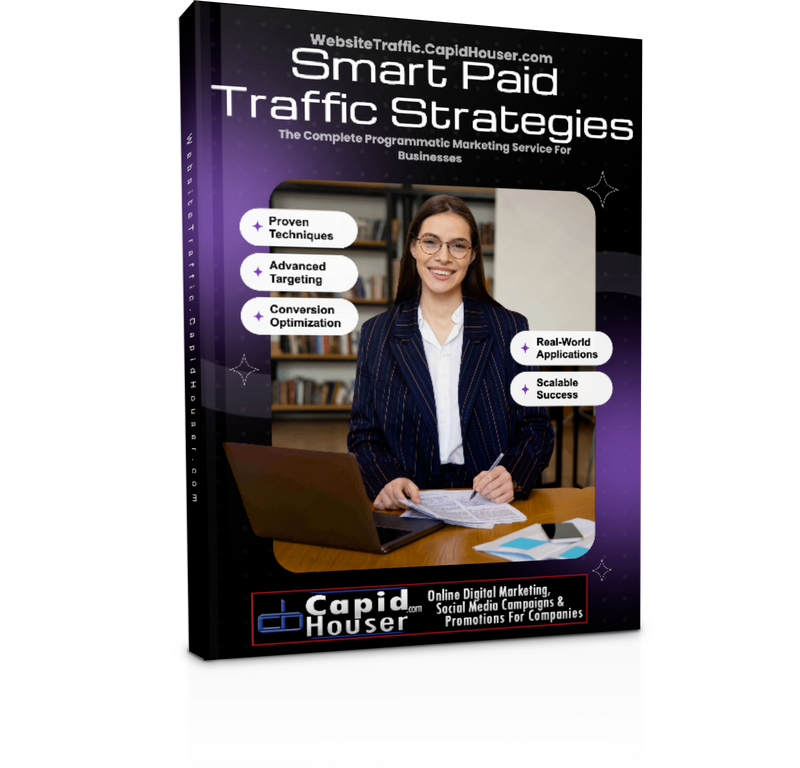Did you know that digital ad spend worldwide exceeded $600 billion in 2023, with display ads accounting for nearly 30% of that investment? In today’s digitally connected world, marketing and branding strategies that rely solely on organic reach are no longer enough. Businesses now use display ads for marketing and branding to stand out, grow their influence, and scale with speed. This guide will show you why display advertising is not just a trend but an essential ingredient for any successful brand looking to thrive.
Digital First: Why Use Display Ads for Marketing and Branding Matters More Than Ever
Shocking digital advertising statistics and trends: According to eMarketer, digital ad spending in the UK grew by over 11% last year, with display ads securing the biggest jump in media spends.
Unconventional facts about display advertising: Banner blindness is a real challenge—yet creatively designed banner ads see up to 400% more engagement than static ones, especially when matched to relevant audiences.
Key drivers behind display ad performance: Advanced audience targeting, rich media innovation, and real-time analytics are helping marketers achieve brand awareness and conversions more efficiently than ever before.
What You’ll Discover About Using Display Ads for Marketing and Branding
How to leverage display ads for maximum brand awareness
Types of display ads and matching them to your marketing and branding goals
Step-by-step guide to launching your first display advertising campaign
Comparing display ads with other ad formats to find the best fit
Advanced targeting secrets for an effective ad campaign
Real-world branding success stories using display advertising
Understanding Display Ads: Foundation for Marketing and Branding Success
What are Display Ads and How Display Advertising Drives Brand Growth
Display ads are visually-driven digital advertisements that appear across websites, apps, and social media platforms. These eye-catching banners, animation, videos, and interactive rich media formats offer brands unprecedented reach and immersion. By placing your brand in front of potential customers while they browse the web, you can gain mindshare well before they’re ready to buy.
The effectiveness of using display ads for marketing and branding lies in their ability to build brand recall. Display advertising doesn’t just increase exposure—it consistently places your message where your target audience spends time, reinforcing your value proposition. Through repeated impressions, consumers begin to associate your visuals and messaging with credibility and trust. Done right, display advert strategies are proven to boost brand awareness and drive both online and offline conversions.

Types of Display Ad Formats: Banner Ads, Rich Media, and Native Ads Explored
Banner ad variations: Classic static and animated banners, skyscrapers, rectangles, and leaderboard ad sizes that appear on websites across the internet.
Native ads for seamless brand promotion: These blend with surrounding content, making them less intrusive and more engaging for users.
Rich media for interactive engagement: Dynamic creatives featuring video, audio, and interactive elements generate significantly higher click-through and conversion rates.
Comparison of Display Ad Types: Features, Pros, Cons, and Best Use Cases | ||||
Ad Type |
Features |
Pros |
Cons |
Best Use Case |
|---|---|---|---|---|
Banner Ads |
Static/animated, fixed sizes |
Widespread reach, easy to deploy |
Banner blindness, less engagement |
Brand awareness, broad audience campaigns |
Native Ads |
Matches site design/content |
Non-intrusive, higher engagement |
May blur ad/content boundaries |
Brand storytelling, content marketing |
Rich Media |
Interactive elements, animation, video |
Highly engaging, higher conversions |
Complex creation, higher cost |
Product launches, high-impact branding |

Display Ads in Action: Strategies for Successful Marketing and Branding
Launching a Display Advertising Campaign: Step-by-Step Blueprint
Embarking on a display advertising campaign starts with clearly defined goals—do you want to build brand awareness , generate leads, or drive direct sales? Next, choose the right ad formats , matching your creative assets to your campaign objectives. Carefully allocate ad spend and select platforms—such as the Google Display Network —that align with your audience’s online behaviour.
Develop visually engaging creatives and a compelling call to action that resonates with your target market. Set up UTM tracking to monitor performance and A/B test different creatives for continuous optimisation. With regular monitoring and adjustment, your display ads can drive consistent results, surpassing other forms of marketing in both reach and efficiency.
Banner Ads and Beyond: Choosing the Right Ad Format and Ad Size
Standard banner ad sizes: Popular formats include 728x90 (leaderboard), 300x250 (medium rectangle), and 160x600 (wide skyscraper). These ad sizes are universally supported and proven to perform for general branding campaigns.
Rich media vs. static display ad formats: While static banner ads offer simplicity and broad reach, rich media formats engage viewers with animation or video, increasing interaction and time spent with your brand.
Choosing formats for high brand awareness: Select a mix of static, animated, and interactive formats to cover all your bases—boosting recall and resonating with diverse audiences across platforms.

Targeting the Right Audience: Reaching Your Brand’s Ideal Customers
Demographic and interest-based targeting: Use robust data to narrow your ad campaign reach by age, gender, interests, or behaviours, ensuring your message resonates with the right users.
Utilising the Google Display Network for optimal reach: Tap into millions of websites, apps, and YouTube channels to amplify your display ad’s reach while targeting based on keywords, placements, and topics.
Remarketing to boost conversion rates: Show ads to users who have previously visited your site, nudging them back down the funnel and increasing your campaign’s conversion rates .
Optimising Your Display Ad Campaign for Higher Conversion Rates
Success in display advertising requires constant refinement. Use real-time analytics to identify which ads, formats, and placements perform best, then reallocate budget to maximise impact. Experiment with A/B testing creative elements and messaging to discover what truly drives clicks and engagement for your target audience .
Track onsite behaviour post-click—assess how many users take desired actions (downloads, sign-ups, purchases) after interacting with your ad. By aligning your creative to match landing page intent, you ensure a seamless user journey from ad impression to conversion.

Effective Landing Pages and Calls to Action that Convert from Display Ads
Your ad’s success doesn’t end with the click—it extends to the landing page . Build purpose-driven pages with a clear value proposition, concise copy, and a prominent call to action (CTA). Maintain consistency by mirroring the branding, message, and visual style of your ad to reassure users and reduce drop-off.
Fast load times, intuitive layout, and mobile-friendly design are critical for conversion. Use dynamic elements or tailored content to further personalise the landing page experience, increasing the chances that your display advertising campaign generates measurable results.
Metrics for Success: Measuring the Impact of Display Advertising
Key Performance Indicators: Brand Awareness, Conversion Rate, and ROI
How to calculate brand awareness lift: Use surveys, direct traffic analysis, and view-through rates to assess increase in brand recall resulting from your display ads.
Understanding conversion rates from display ads: Track the percentage of viewers who take your desired action post-click, whether it’s engagement or purchase.
Evaluating ad spend versus return: Assess the return on ad spend (ROAS) by comparing campaign-generated revenue to total ad expenses, ensuring efficiency as you scale.
Using Google Display Network Analytics to Assess Display Ad Campaigns
The Google Display Network delivers detailed analytics dashboards that break down impressions, clicks, conversions, and audience demographics. Metrics such as CTR (Click-Through Rate), CPM (Cost Per Mille), and conversion rate give a comprehensive overview of campaign performance.
Monitor engagement by placement, format, and creative to uncover what’s truly driving brand awareness and action. By interpreting these insights, you can refine targeting, allocate ad spend efficiently, and scale high-performing ad campaigns while quickly dropping underperformers.
Sample Metrics Benchmarks for Display Ad Campaigns by Industry | |||
Industry |
Average CTR |
Average Conversion Rate |
Avg. CPM (£) |
|---|---|---|---|
Retail |
0.63% |
2.2% |
£2.80 |
Travel |
0.47% |
1.6% |
£2.35 |
Technology |
0.82% |
2.7% |
£3.50 |
Finance |
0.60% |
1.8% |
£3.70 |

A/B Testing Display Ads and Landing Page Variations
Implement A/B testing across your display ads and landing pages to optimise for greater efficiency. Test different headlines, imagery, CTAs, and layouts to see which variants perform best with your target audience. Over time, this data-driven approach can significantly boost your conversion rate and overall campaign ROI.
Remember that even subtle changes—a new background colour, updated headline, or repositioned button—can improve engagement. Make sure to track each test independently using proper analytics tracking to maintain accurate results.
"Display advertising remains a dominant force in driving online brand awareness and recall."
Real-World Success Stories: Display Ads for Marketing and Branding Excellence
Case study: Building brand awareness with display ads: A UK fashion retailer increased brand recognition by 60% in one quarter by running a mix of banner and native ads across lifestyle websites.
Case study: Rich media campaign increases conversion rate: An electronics brand used rich media display adverts to demo product features. The result? A conversion rate spike from 1.3% to 3.7%.
Case study: Using retargeting to boost a display ad campaign’s ROI: An online bookstore implemented retargeting via Google Display Network, leading to a 55% increase in repeat customer sales and a 6:1 return on ad spend.

Top Brands Leveraging Display Advert Campaigns Successfully
Major household brands like Nike and Amazon invest heavily in display advertising to maintain a dominant market presence. Their focus on omnichannel exposure, consistent visual branding, and audience retargeting has allowed them to cultivate loyal customer bases and huge market share. Smaller brands have also found success by mimicking these tactics on a more modest budget, proving that effective use of display ads for marketing and branding is achievable at any level.
"Our banner ad retargeting boosted engagement by 40% in three months." – Marketing Director, Leading E-commerce Brand
Side-by-Side: Display Ads vs. Search Ads – Which Suits Your Branding Needs?
Feature Comparison: Display Ads vs. Search Ads in Marketing and Branding | ||
Feature |
Display Ads |
Search Ads |
|---|---|---|
Ad Format |
Visual ads: banners, images, rich media, video |
Text-based; triggered by specific keyword searches |
Brand Visibility |
Broad, passive, and high-frequency |
Intent-driven, lower reach but high intent |
Best For |
Brand awareness, storytelling, retargeting |
Immediate lead generation, targeting in-market buyers |
Cost Model |
Typically CPM/CPC |
CPC (cost-per-click) |
Creative Potential |
Very high: use of audio, video, animations |
Low: text only, limited extensions |
Visual showdown: banner ads vs. text-based search ads
When to opt for display advert or display advertising campaigns: Display ads are ideal for increasing brand recognition and nurturing audiences, while search ads are best for capturing users actively seeking your offer.

Best Practices for Display Ad Campaigns in Marketing and Branding
Ad Spend Optimisation: Getting the Most from Your Display Advertising Budget
Stay focused on your goal by adjusting ad spend based on real-time performance data. Allocate more budget to high-performing placements and audiences, while quickly discontinuing underperforming creatives. Leverage automated bidding strategies where possible for optimal use of display advertising budgets.
Use frequency capping to avoid overwhelming your target audience, ensuring your display ads remain effective and not intrusive. Continuously test different ad formats and targeting options to squeeze out the best results with every pound spent.
Design Tips: Eye-Catching Display Ads that Capture Attention
Powerful colour & imagery selection: Use bold, brand-inspired colours and high-quality visuals for instant recognition.
Compelling calls to action: Make your CTA clear, urgent, and directly linked to your campaign’s value proposition.
Maintaining consistency with brand identity: Repeat your logo, tagline, and brand colours for cohesive marketing and branding across all display ad formats.

Compliance and Brand Safety in Display Advertising
Ensure all creatives and placements meet platform and legal regulations to avoid risks to your brand’s reputation. Use transparent ad practices, opt for safe placements, and leverage third-party verification tools to guarantee brand safety when deploying display ads for marketing and branding.
"Transparent ad practices and safe placements are essential for brand trust in digital display advertising."
People Also Ask: Expert Insights into Using Display Ads for Marketing and Branding
What are display ads in marketing?
Display ads are visually-driven advertisements that appear across websites, apps, and digital platforms, letting brands communicate with large audiences using immersive images, video, or interactive elements.
When should you use display ads?
Display ads excel when seeking to generate brand awareness, launch new products, support retargeting strategies, or reach wide but relevant audiences efficiently.
What are the benefits of display ads?
Display ads offer broad reach, visually engaging formats, cost-effective CPM/CPC models, precise targeting, retargeting, measurable impact on brand lift and conversions.
How effective is display advertising?
Effective display advertising is proven to boost brand recall, increase conversion rates, efficiently re-engage website visitors, and supplement performance marketing at every sales funnel stage.
Frequently Asked Questions About Using Display Ads for Marketing and Branding
How much should I budget for a display ad campaign?
Budgets can range from as little as £500 for small businesses to millions for global enterprises. Your goals, reach, industry, and ad formats will influence optimal ad spend. Begin small, measure, and scale your display advertising budget as you see significant results.What’s the difference between banner ads and native ads?
Banner ads are typically placed in set positions on a page and are easily recognisable as advertisements. Native ads blend seamlessly with the surrounding content for a less intrusive experience, often leading to higher engagement.How do I improve the conversion rate of my display ads?
Use A/B testing, refine creatives, ensure ad relevance, optimise your landing page experience, and target the right audience closely to lift your conversion rate on display advertising campaigns.What networks should I use for my display advertising campaigns?
The Google Display Network, Facebook Audience Network, LinkedIn, and programmatic ad networks are top choices, each providing distinct targeting and creative options for display campaigns.How do I measure the success of my display ad campaigns?
Implement measurement tools such as Google Analytics, view-through tracking, and brand lift surveys to evaluate impressions, clicks, conversion rates, and ROI for every advertising campaign you launch.
Checklist: Launching and Optimising Your Display Ad Strategy
Define clear marketing and branding goals for your display ad campaign
Select appropriate ad formats (banner ads, rich media, native ads)
Target the right audience using Google Display Network
Design compelling creatives that fit your brand
Set up tracking for brand awareness, conversion rates, and ad spend
A/B test creatives and landing pages
Optimise continuously for greater ROI
Summing Up: Maximising Impact as You Use Display Ads for Marketing and Branding
Key takeaways for effective display advertising campaigns: Target wisely, harness creative formats, and never stop testing.
The evolving future of display adverts and display networks: Automation, advanced targeting, and richer media will shape success in modern marketing and branding.

Unlock Next-Level Results: Contact Our Experts to Use Display Ads for Marketing and Branding
Contact us at https://www.capidhouser.com/paid-website-traffic/ to discuss your Retargeting & Remarketing strategy and start transforming your digital marketing outcomes.
To enhance your understanding of leveraging display ads for marketing and branding, consider exploring the following resources:
“What is Display Advertising? A Beginner’s Guide” : This guide from Amazon Ads provides a comprehensive overview of display advertising, detailing its benefits such as measurability, cost-effectiveness, and flexibility. ( advertising.amazon.com )
“7 Display Ad Design Best Practices to Generate More Clicks” : WebFX outlines seven essential tips for creating effective display ads, including the importance of incorporating a logo, unique selling proposition, and a clear call to action. ( webfx.com )
These resources offer valuable insights into the strategic implementation and design of display ads, helping you maximize their impact on your marketing and branding efforts.
 Add Row
Add Row  Add
Add 




Write A Comment